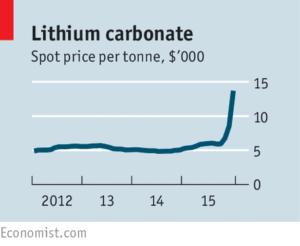A couple of days ago, legendary investor, commodity bull and one-time partner of George Soros, Jim Rogers , was interviewed by Betty Liu of Bloomberg’s Singapore office. It seems that Jim Rogers is also of the opinion that Fannie Mae is going to lose a lot of money along with other investment banks.
, was interviewed by Betty Liu of Bloomberg’s Singapore office. It seems that Jim Rogers is also of the opinion that Fannie Mae is going to lose a lot of money along with other investment banks.
Financial Sector
LIU: All right. Jim, first, talk to us about the story of the week that we’ve seen so far, Lehman Brothers, you know, you’ve been very critical so far about what’s been going on on Wall Street, the accounting, all of that. Do you believe, I mean this is relevant – do you believe that Lehman Brothers is in fact in so good shape that they’ve got no liquidity problems or what’s your view on this right now?
ROGERS: Well, okay, I am still all – short all of the investment banks on Wall Street through the ETF. I know they are all in trouble. I know most of them have phony accounting. And you know, in bear markets, they all go down to eight. So, I just presume they are all going to go to eight before it’s over, before the bear market is over.
LIU: Do you believe that we could another Bear Stearns as we did in March?
ROGERS: Oh, why not, sure. There are certainly – and I’m also short Citibank and I’m also short Fannie Mae. So, you know, some of these companies have – have horrendous balance sheets and if the bear market has a ways to go, which in my view, it does, then you are going to see some really, really low prices. But, Betty, there’s nothing unusual about this, just go back and look at any previous bear market. Financial stocks sell at unbelievably low prices during bear markets. This was not going to be any – well, this one may be a little different because it’s just going to be worse for the financial companies during this bear market, because the excesses during the past five or ten years have been so horrendous in the financial communities.
LIU: All right. And Jim, you know, I want to turn back to, of course, the Fed and the banks and all of that. You were talking before about some of the stocks that you’re short on. Are you short on Lehman Brothers?
ROGERS: I’m short the ETF, Betty, the investment bank ETF, which means I’m short all of them. I am not short any specific investment banks. First of all, I have too many friends at all of those places, I don’t want to short any of them specifically. So, I am just short at the ETF, which means I am short all of them, I mean some would do well, some will do probably too badly, but the ETF in my view is going to go down a lot more.
LIU: Well, does what happened with Lehman Brothers over the past week, does it perhaps stoke your interest in shorting Lehman along with Citigroup? And Fannie, I believe is the one you talked about as well.
ROGERS: I’m already short Fannie Mae and Citibank, and have been for sometime. I’m just going to kind of stay with the ETF. It’s easier for somebody like me, who’s too lazy to spend a lot of time on any specific one, except for Citibank and Fannie Mae.
Monetary Policy
LIU: All right, Jim. So, tell us, you have also been very critical of the Fed and Ben Bernanke. I want to ask you first one thing. How do think the Fed has handled so far what’s been going on on Wall Street? You think that they helped situations or actually made things worse?
ROGERS: They made things worse, Betty. They printed huge amounts of money, which has caused great inflation which could cause the dollar to go down, and the Federal Reserve has taken on something like $400 billion of bad assets on to its balance sheet. Now, you and I as American taxpayers are going to have to pay off that debt some day. What’s Bernanke going to do? Get in his helicopter, and fly around, collecting bad debt? Is he going to start repossessing cars, repossessing houses that go bad? I mean, this is insane Betty, the Federal Reserve has $800 billion on its balance sheet. They have already committed $400 billion to bad debt. What then they are going to do next? Where are they going to get the money the next time things start going wrong?
Investment Strategy
LIU: Okay. Okay, well, given that scenario, Jim, as an investor, where are you going to put your money right now?
ROGERS: I own commodities, I have been buying agriculture, I bought airlines today. I bought a lot of airlines around the world today, both stocks and bonds. Swiss franc, Japanese yen, renminbi, these are the few things I have been buying recently.
Airlines
LIU: You bought airlines? A lot of people are very bearish on the airlines, talking about the fuel cost. Why are you buying airlines?
ROGERS: Well, Betty, you just got through the same why, everybody is very bearish. No, I don’t buy things just because people are bearish, but I fly a lot, and the planes are full. You cannot buy a new – if you order a new plane today, you couldn’t get it for several years. This Boeing and Airbus have problems. You read every day that the airlines are cutting back their capacity. Fares are going up. I mean, Betty, everybody knows about the fuel cost. Is there any airline left that doesn’t know we have fuel problems? They are adjusting for all of it.
LIU: Well, that’s true. But there’s also talk about bankruptcies in the airline industry. And you think some could go bankrupt?
ROGERS: How much more bullish in the news do you want? Twenty-four airlines have gone bankrupt this year. That’s great news. You know, five out of the seven largest American airlines went bankrupt during this decade. So, fine. Bankruptcies are signs of bottoms, not signs of tops.
Commodities
LIU: Right. You know, staying with oil and commodities, we’ve seen a pullback in some commodities in recent months. But which commodities do you like right now, Jim, and which don’t you like?
ROGERS: Well, I mean, yes, a lot of commodities have come down pretty hard. If people are talking about a bubble, I’d like to know what they’re talking about. I mean, many commodities, nickel, zinc, lead are down 50 percent. Silver is down 80 percent from its all-time high. Sugar is down 80 percent from its all-time high. What kind of bubble is that? Cotton is down 40 percent from its all-time high. Coffee is down 60 percent from its all-time high. I have been buying agriculture recently, I’m holding off a little bit right now because it looks like Congress is determined to do something to drive down commodity prices. If they do, it’ll be a fantastic buying opportunity and I’ll buy more.
LIU: Jim, you – .
ROGERS: But what I bought most recently is more agriculture.
LIU: More agriculture? In China, did you buy?
ROGERS: I bought agriculture stocks in China. It’s not legal for – I mean, it’s almost impossible for foreigners to buy commodities – commodities and sales in China.
LIU: Right. Okay, also, you’ve said before that we’re half- way through the commodity bull run. You still think that, or I mean how long can this bull run last for?
ROGERS: Well, Betty, there are number of acres devoted to wheat farming. It’s been declining for 30 years. The inventory of food is at the lowest level in 50 or 60 years. We are burning a lot of our agricultural products in fuel tanks now, as fuel. That’s useless, that’s hopeless. Talk about a bubble, that’s a bubble. It’s crazy that we’re spending so much money burning our agricultural products as fuel. But you can go on a long time, nobody has discovered any major oil fields for over 40 years. Betty, all the oil fields in the world are in decline. I mean, there’s been one lead mine opened in the world in 25 years. The last lead smelter built in America was built in 1969. Unless somebody starts bringing on a lot more capacity soon, that bull market has got a ways to go.
Oil
LIU:All right. Jim, also talk to us about oil. You know, you’ve been very bullish on oil. We’ve had a lot of people talk about, you and I had a debate about whether or not there’s speculation in oil markets right now. You say no, others say yes, like Soros, he says it’s going to bubble. What do you know that others don’t about the oil market?
ROGERS: Look, look, Betty, there are always speculators in every market. Look at the New York Stock Exchange right now. You think there aren’t any speculators down there on the floor of the stock exchange? There are always speculators. That’s what business is all about. I submit to you that most of the people and – I don’t know about most of the people, I shouldn’t say that, but we know that the IEA, the definitive authority on oil has said that the world has an oil problem. The Saudis have told Bush that we have an oil problem. Betty, if there is lot of oil, please, would somebody tell us where it is, so we can all invest in it? The world has a serious oil problem. Now, Betty, that does not mean that oil cannot go down 50 percent. During this bull market since 1999, oil has gone down twice by 50 percent, going down by 50 percent in 2001 and again, in 2000 whatever it was, ‘05 or ‘06. So sure, you can have big reaction in any bull market. But that’s not the end of the bull market. There is no supply of oil unless you – somebody can tell us where the oil is, the bull market in oil has years to go despite new corrections which may or may not come.
LIU: Well, but you know, and I know you always hate having me ask you about – about limits or caps and all of that. But, given the supply/demand situation that you’re talking about, how high can oil go?
ROGERS: Betty, I know you – how you’re paid to ask questions like that, but I don’t know the answer. I’m not smart enough. I know that unless somebody discovers a lot of oil, the price of oil can go to $150, $200. You pick the number.
U.S. Dollar
LIU: All right, Jim. And I’ve got to turn to the dollar very quickly. What do you make of the comments by Bernanke earlier this week, noting the dollar slide, you have been very, very critical of Bernanke on this.
ROGERS: It is astonishing. Now, this is a man that under oath in Congress said, “If the price of the dollar goes down, it doesn’t affect ordinary – it doesn’t affect most Americans.” So, I almost fell out of my chair when I saw him say that. We know the man doesn’t know about markets, we know he doesn’t know about the currencies. Now, we know he doesn’t even understand civil economics, simple economics. So, I was astonished to see him, what, two or three days –
LIU: Right.
ROGERS: – suddenly said, “Well, if the dollar goes down, it affects us all.” It’s called inflation. So, somebody’s been teaching him economics. It’s about time, he should go back and take Economics 101.




